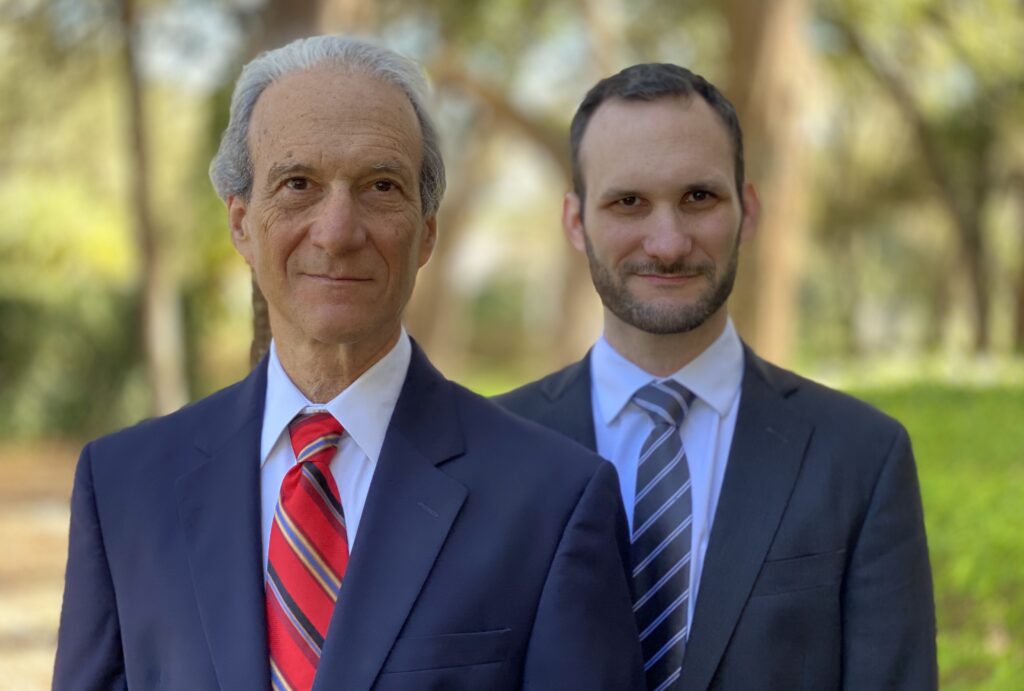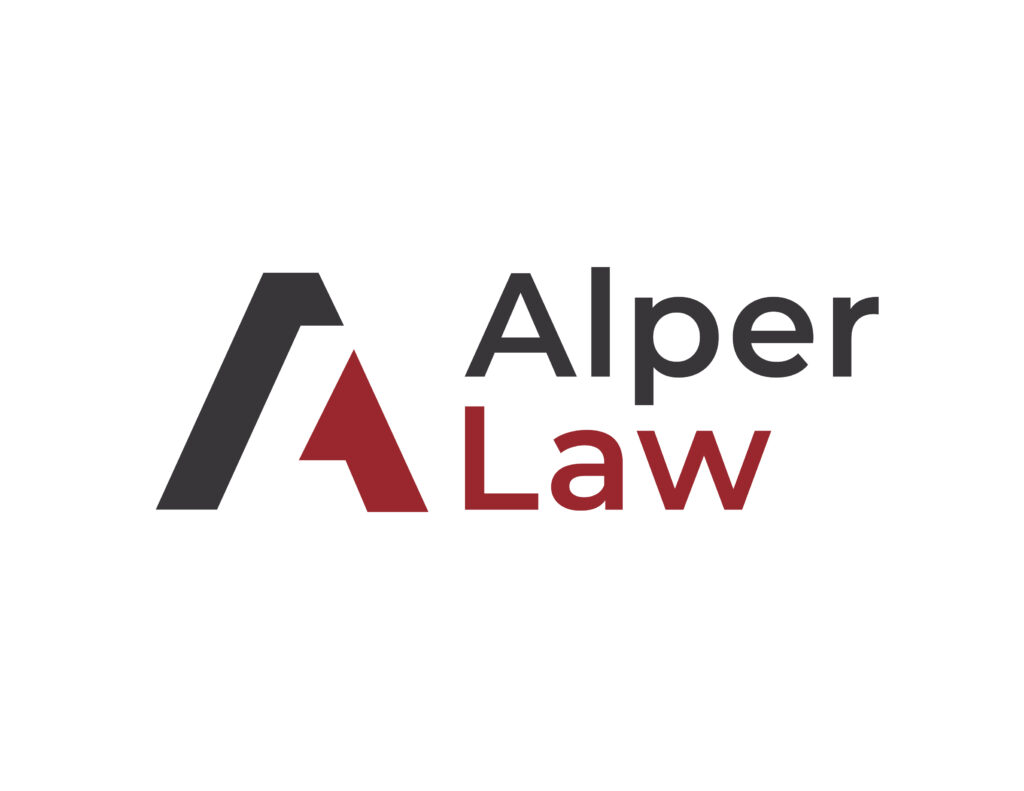A Wyoming Asset Protection Trust, formally known as a Wyoming Qualified Spendthrift Trust (WQST), is a self-settled irrevocable trust established under Wyoming law to protect assets from creditors while allowing the grantor to remain a beneficiary. Unlike traditional trusts, Wyoming’s statute (W.S. § 4-10-510 et seq.) permits you to create a trust for your own benefit while maintaining strong creditor protection.
Wyoming Asset Protection Trusts offer several distinctive advantages: protection from lawsuits and creditor claims, no Wyoming state income tax, the ability to retain significant control as investment advisor, and dynasty trust provisions allowing the trust to continue for up to 1,000 years. These trusts are particularly valuable for physicians, business owners, real estate investors, and other high-net-worth professionals facing potential liability exposure.
Wyoming enacted its Qualified Spendthrift Trust Act on July 1, 2007, joining a select group of states offering domestic asset protection trusts (DAPTs). Wyoming’s statute is considered among the strongest due to its short fraudulent transfer statute of limitations, flexible trustee provisions, and robust privacy protections. However, like all domestic trusts, Wyoming trusts have limitations compared to offshore asset protection trusts, which we’ll explore in detail below.
What is a Wyoming Asset Protection Trust?
A Wyoming Asset Protection Trust is an irrevocable trust governed by Wyoming’s Uniform Trust Code that permits the person creating the trust (the grantor or settlor) to also be a beneficiary while maintaining protection from most creditor claims. This is significant because under traditional trust law in most states, self-settled trusts—where you create a trust for your own benefit—provide no creditor protection.
The Legal Foundation: Wyoming Statute § 4-10-510
Wyoming’s Qualified Spendthrift Trust statute, codified at W.S. § 4-10-510, establishes specific requirements that must be met for creditor protection:
- The trust must be irrevocable
- At least one trustee must be a qualified trustee (Wyoming resident or authorized Wyoming trust company)
- Some portion of trust administration must occur in Wyoming
- The trust instrument must contain a spendthrift provision
- The qualified trustee must maintain errors and omissions insurance of at least $1 million
When these requirements are satisfied, the trust receives protection under W.S. § 4-10-514, which provides that a qualified spendthrift trust’s assets are not subject to creditor claims against the beneficiary, even when the beneficiary is also the settlor.
How This Differs from Traditional Trusts
Most trusts fall into two categories: revocable living trusts and third-party trusts. Revocable living trusts provide no asset protection because you maintain complete control and can revoke the trust at any time—creditors can reach these assets just as if you owned them directly. Third-party trusts provide excellent protection, but require someone else to create the trust for your benefit, meaning you cannot use your own assets.
Wyoming Asset Protection Trusts occupy a unique middle ground. You create the trust using your own assets (self-settled), you can be a beneficiary receiving distributions, yet the trust provides creditor protection similar to third-party trusts. This combination was previously impossible under most state laws.
How Wyoming Asset Protection Trusts Work
Understanding the protection mechanism requires examining the roles, structure, and legal framework that makes these trusts effective.
The Three Key Roles
The Grantor (Settlor): This is you—the person creating the trust and transferring assets into it. You execute the trust document, transfer property to the trust, and sign required affidavits. Under Wyoming law, you can also serve as investment advisor, maintaining substantial control over how trust assets are invested.
The Qualified Trustee: Wyoming requires at least one trustee be either a Wyoming resident individual or a trust company authorized to do business in Wyoming under W.S. § 4-10-510(a)(iv). The qualified trustee maintains Wyoming situs, handles administrative duties, makes distribution decisions, and ensures ongoing compliance. You can serve as a co-trustee alongside the qualified trustee, though the qualified trustee must have meaningful authority.
The Beneficiaries: You can name yourself as a discretionary beneficiary, meaning the trustee has discretion to make distributions to you. You can also name family members, future generations, or charitable organizations. The key is that distributions are not mandatory—the trustee’s discretion is what maintains creditor protection under W.S. § 4-10-514.
The Protection Mechanism
The creditor protection works through several layers:
Spendthrift Provision: The trust must include language stating that beneficiary interests cannot be voluntarily or involuntarily transferred. Under W.S. § 4-10-502, this prevents creditors from attaching the beneficiary’s interest in the trust or forcing distributions.
Discretionary Distributions: Because the trustee has complete discretion over distributions and you have no right to demand payments, creditors cannot compel distributions to satisfy judgments. The trustee can refuse to make distributions when doing so would subject assets to creditor claims.
Wyoming Choice of Law: The trust document specifies that Wyoming law governs interpretation and administration under W.S. § 4-10-515. This means that even if you live in another state, Wyoming’s favorable asset protection provisions apply.
Statute of Limitations: Wyoming provides that creditors must bring fraudulent transfer claims within the shorter of four years from the transfer date or one year from discovery of the transfer under W.S. § 4-10-505. Once this period expires, transfers generally cannot be challenged as fraudulent, even if the transfer was made to hinder creditors.
In Practice: How This Protects Your Assets
Consider this example: Dr. Sarah, a surgeon with $3 million in net worth, establishes a Wyoming Asset Protection Trust in 2023 and transfers $2 million in investment accounts to the trust. She names a qualified Wyoming trustee and serves as investment advisor, maintaining control over investment decisions. The trust names her as a discretionary beneficiary along with her children.
In 2026, three years later, Dr. Sarah faces a malpractice lawsuit resulting in a $4 million judgment. She has $2 million in insurance, leaving $2 million uncovered. The plaintiff cannot reach the $2 million in the Wyoming trust because: (1) the transfer occurred more than four years ago, exceeding the fraudulent transfer statute of limitations; (2) the spendthrift provision prevents attachment of her beneficiary interest; (3) distributions are discretionary, not mandatory; and (4) the qualified trustee will not make distributions while creditor claims are pending.
Talk to an Expert and Get Free Information
Alper Law is a nationally recognized expert in asset protection planning and offshore trusts. For over 30 years, we’ve provided clear, actionable advice to thousands of clients about how to protect themselves from creditors.
We provide all services by phone or Zoom.

Benefits and Advantages of Wyoming Asset Protection Trusts
Wyoming Asset Protection Trusts offer substantial benefits for high-net-worth individuals seeking creditor protection while maintaining control over their assets. Understanding these advantages helps determine whether Wyoming is the right jurisdiction for your asset protection planning.
Creditor Protection and Lawsuit Defense
The primary benefit of a Wyoming Asset Protection Trust is protection from creditor claims and lawsuit judgments. Under W.S. § 4-10-514, assets transferred to a qualified Wyoming trustee are generally protected from creditors once the applicable statute of limitations expires—typically two to four years depending on whether creditors had actual notice.
Unlike third-party trusts where someone else creates the trust for your benefit, Wyoming permits self-settled trusts where you create the trust for yourself while still maintaining creditor protection. This is a significant advantage, as most states don’t allow self-settled spendthrift trusts to shield assets from creditors.
In practice, this means that if you transfer $2 million to a Wyoming Asset Protection Trust and face a lawsuit three years later, creditors generally cannot reach those assets to satisfy the judgment. The spendthrift provisions under W.S. § 4-10-514 prevent creditors from attaching trust assets or forcing distributions.
However, protection has important exceptions we’ll discuss in the limitations section—certain creditors like child support claimants retain rights under W.S. § 4-10-519.
Wyoming Tax Advantages
Wyoming imposes no state income tax, making it attractive for trust establishment. Trust income that accumulates in the trust is not subject to Wyoming taxation. This contrasts with states like California or New York, which may attempt to tax trust income if the grantor resides in those states.
Additionally, Wyoming has no state gift tax, estate tax, or generation-skipping transfer tax. Federal taxes still apply, but Wyoming’s tax-neutral environment provides advantages for dynasty trusts designed to continue for multiple generations.
Note that state tax treatment for residents of other states remains complex. If you live in California and create a Wyoming trust, California may still attempt to tax certain trust income under its throwback rules. We advise consulting with a tax professional familiar with both jurisdictions to understand your specific tax situation.
Dynasty Trust Provisions and Perpetual Duration
Wyoming abolished the common law rule against perpetuities, permitting trusts to continue for up to 1,000 years under W.S. § 4-10-411. This allows you to create a dynasty trust that benefits multiple generations of descendants while maintaining creditor protection and avoiding estate taxes at each generation.
Compare this to states that retain traditional rule against perpetuities limitations of 90 years or lives in being plus 21 years. Wyoming’s 1,000-year duration means your great-great-great-grandchildren can benefit from trust assets established today, with creditor protection intact for each generation.
For families with substantial wealth concerned about both asset protection and multi-generational wealth transfer, combining Wyoming’s asset protection features with dynasty provisions creates powerful long-term planning opportunities.
Privacy and Confidentiality
Wyoming trust law provides strong privacy protections. Trust documents need not be filed publicly or recorded. Under W.S. § 4-10-813, trustees must provide accountings to qualified beneficiaries, but Wyoming’s definition of qualified beneficiaries can be narrowly tailored in the trust document.
Additionally, Wyoming has no requirement to register trusts with any state agency (unlike some states that require trust registration). The only public filing is an annual report to the Wyoming Secretary of State confirming the trust’s existence and the name of the qualified trustee—this report does not disclose trust assets, beneficiaries, or financial details.
This privacy is valuable when you prefer to keep wealth accumulation and asset protection strategies confidential. Creditors, business competitors, and others cannot easily discover trust existence or assets through public records.
Control Retention Through Investment Advisory Role
Unlike traditional irrevocable trusts where you relinquish all control, Wyoming permits you to serve as investment advisor under W.S. § 4-10-510(b). As investment advisor, you direct how trust assets are invested—choosing stocks, bonds, real estate, private equity, or other investments without requiring trustee approval for each decision.
This addresses a common concern with asset protection trusts: many people are reluctant to transfer millions of dollars to a trustee who will make all investment decisions. Wyoming’s investment advisor provision allows you to maintain investment control while the qualified trustee handles administrative duties and distribution decisions.
You can also name a trust protector—an independent party with authority to remove and replace the trustee, modify certain trust provisions, or make other administrative changes. This provides another layer of retained influence without compromising creditor protection.
Estate Planning Integration
Wyoming Asset Protection Trusts integrate effectively with comprehensive estate planning strategies. The trust can serve simultaneously as:
- An asset protection vehicle during your lifetime
- A dynasty trust benefiting multiple generations
- A mechanism for avoiding probate on trust assets
- A tool for reducing estate tax exposure through proper structuring
Additionally, you can fund the trust gradually over time rather than transferring all assets immediately. This allows you to test the trustee relationship, adjust to working with the qualified trustee, and maintain adequate liquid assets outside the trust for current needs.
Many clients use Wyoming trusts as part of a layered protection strategy, combining them with limited liability companies, family limited partnerships, and other tools to create comprehensive protection for different asset classes.
Disadvantages and Limitations of Wyoming Asset Protection Trusts
While Wyoming Asset Protection Trusts offer substantial benefits, honest evaluation requires understanding their limitations. Every client should weigh these factors carefully before establishing a trust.
Subject to U.S. Court Jurisdiction and Full Faith and Credit
The most significant limitation of Wyoming Asset Protection Trusts is that they remain subject to U.S. court jurisdiction. Under the Full Faith and Credit Clause of the U.S. Constitution (Article IV, Section 1), federal courts and courts in other states may have authority to reach trust assets under certain circumstances.
Case law shows that creditors can sometimes pierce Wyoming trust protections by bringing actions in their home states and arguing conflict of laws principles. While Wyoming’s choice-of-law provisions are strong under W.S. § 4-10-515, they are not absolute, particularly when dealing with federal claims or bankruptcy proceedings.
In our experience, Wyoming trusts provide effective protection against most state-level creditor claims but are more vulnerable than offshore trusts when facing determined creditors with substantial resources or federal claims. The difference: offshore trusts require creditors to relitigate claims under foreign law in foreign courts—expensive and often unsuccessful—while Wyoming trusts remain within U.S. judicial reach.
A federal judge may find ways to compel trust distributions or hold you in contempt for failure to repatriate assets, particularly when the judge perceives the trust as abusive. While Wyoming law provides protection, federal courts sometimes apply different standards.
Exception Creditors Under Wyoming Statute § 4-10-519
Wyoming statute W.S. § 4-10-519 specifically identifies categories of creditors who can reach trust assets despite spendthrift provisions:
Child support and alimony: Current and past-due child support obligations and spousal maintenance can reach trust assets. Courts view these obligations as paramount to asset protection planning.
Claims by spouses and former spouses: Divorce proceedings may allow equitable division of trust interests, particularly when the trust was created during marriage using marital assets.
Claims by beneficiaries for support: If the trust instrument requires support payments to beneficiaries and the trustee fails to make them, beneficiaries can compel distributions.
Tax obligations: Federal and state tax authorities can reach trust assets to satisfy tax liabilities under 26 U.S.C. § 6321. The IRS is not bound by state spendthrift provisions.
These exceptions mean Wyoming trusts cannot shield assets from all creditors. They work best for protecting against general commercial creditors, tort claimants, and other judgment creditors—not family court obligations or tax debts.
Fraudulent Transfer Vulnerabilities
Even with Wyoming’s relatively short statute of limitations, fraudulent transfer claims remain a risk. Under the Uniform Fraudulent Transfer Act as adopted in Wyoming (W.S. § 34-14-101 et seq.), creditors can challenge transfers made with actual intent to hinder, delay, or defraud creditors, or transfers made when you were insolvent.
The fraudulent transfer statute of limitations under W.S. § 4-10-505 provides that claims must be brought within the shorter of four years from transfer or one year from discovery. However, existing creditors at the time of transfer may succeed in challenging the transfer even years later if they can prove actual fraudulent intent.
Courts look at “badges of fraud” when evaluating transfers: transferring all or substantially all assets, retaining benefit from transferred property, making transfers when insolvent or becoming insolvent as a result, and making transfers shortly before or after incurring substantial debt. Multiple badges of fraud strengthen creditor claims.
Best practice: establish Wyoming trusts well before creditor claims arise. Transferring assets after a lawsuit has been filed or after you know about potential claims creates almost insurmountable fraudulent transfer problems.
Assets Listed on Credit Applications
When you apply for significant credit—mortgages, business loans, credit lines—lenders require disclosure of assets. If you list Wyoming trust assets on credit applications to qualify for financing, you create an argument that those assets should be available to satisfy the related debt.
Courts have held that listing assets on credit applications creates an equitable estoppel—you cannot claim assets as yours when beneficial (qualifying for credit) then claim they’re unavailable when the lender seeks repayment. This is particularly problematic with business loans where you personally guarantee debt based on personal financial statements including trust assets.
Some asset protection planning involves deliberately choosing not to pledge certain assets or disclose them on applications, accepting reduced credit availability in exchange for maintained protection. This requires careful planning about which assets to keep outside trusts for credit qualification purposes.
Bankruptcy Court Considerations
Federal bankruptcy courts have shown skepticism toward self-settled asset protection trusts. Under 11 U.S.C. § 548(e), bankruptcy trustees can void transfers to self-settled trusts made within 10 years before bankruptcy with actual intent to hinder, delay, or defraud creditors.
This 10-year lookback period substantially exceeds Wyoming’s four-year statute of limitations. If you file bankruptcy or creditors force you into involuntary bankruptcy within 10 years of funding the trust, the bankruptcy trustee may recover trust assets for distribution to creditors.
Additionally, some bankruptcy courts have found debtors in contempt for refusing to repatriate trust assets or compelled debtors to exercise any retained powers (such as investment advisor powers) to benefit the bankruptcy estate. Federal bankruptcy law preempts state asset protection provisions in certain circumstances.
For these reasons, Wyoming trusts work better as protection against state court judgments than against federal bankruptcy proceedings. If bankruptcy is a realistic possibility, offshore trusts with no retained powers may provide superior protection.
Required Solvency and Affidavits
Wyoming requires the grantor to execute an affidavit at trust creation stating that: (1) you are not insolvent and the transfer will not render you insolvent; (2) you do not intend to defraud creditors; (3) you have no knowledge of pending or threatened legal actions; and (4) you are not in arrears on child support or alimony obligations.
This affidavit creates documentary evidence that can be used against you in fraudulent transfer litigation. If a creditor later proves you were insolvent or knew about pending claims when you signed the affidavit, this strengthens their case significantly and may constitute perjury.
You must be genuinely solvent and free from threatened claims when establishing a Wyoming trust. Do not transfer assets while litigation is pending, while you’re negotiating with creditors, or when you have more liabilities than assets.
Cost and Complexity Compared to Simple Alternatives
Wyoming Asset Protection Trusts cost $5,000-$15,000 to establish and $2,500-$6,000 annually to maintain. For some clients, simpler and less expensive alternatives may provide adequate protection:
Consider whether the additional cost and complexity of a Wyoming trust is justified by your specific risk profile. If your primary concern is estate planning rather than creditor protection, simpler trusts may suffice.
Requirements to Establish a Wyoming Asset Protection Trust
Wyoming law imposes specific requirements that must be met for creditor protection to apply. Understanding these requirements ensures proper trust implementation.
Qualified Trustee Requirement
Under W.S. § 4-10-510(a)(iv), at least one trustee must be either:
- An individual who resides in Wyoming, or
- A trust company or bank authorized to conduct trust business in Wyoming
The qualified trustee need not be the sole trustee—you can serve as co-trustee, or name family members or advisors as additional co-trustees. However, the qualified Wyoming trustee must have meaningful authority over trust administration and cannot be merely nominal.
“Meaningful authority” typically includes: maintaining trust records in Wyoming, preparing trust accountings, filing required annual reports with the Wyoming Secretary of State, making final decisions on distributions, and ensuring compliance with Wyoming law.
Wyoming Situs and Administration
Some portion of trust administration must occur in Wyoming under W.S. § 4-10-510(a)(iii). This is satisfied through the qualified trustee’s activities. The qualified trustee must maintain trust records in Wyoming, though this doesn’t require physical paper files—electronic records stored on Wyoming-based servers suffice.
Notably, Wyoming doesn’t require trust assets themselves to be physically located in Wyoming. You can maintain investment accounts at Schwab, Fidelity, or other national brokerages anywhere in the United States. Real estate can be located in any state. The requirement is about trust administration, not asset location.
Spendthrift Provision Language
The trust instrument must include a spendthrift provision stating that beneficiary interests cannot be voluntarily or involuntarily transferred. Under W.S. § 4-10-502, this provision prevents creditors from reaching beneficiary interests.
Typical language: “No beneficiary shall have any right or power to anticipate, encumber, or dispose of any interest in the trust property. No interest of any beneficiary shall be subject to the beneficiary’s liabilities or obligations nor to judgment or other legal process, bankruptcy proceedings, or claims of creditors or others.”
The spendthrift provision must clearly express the settlor’s intent to restrict creditor access. Ambiguous language may result in courts finding insufficient protection.
Irrevocability Requirement
Wyoming requires the trust be irrevocable to qualify for asset protection under W.S. § 4-10-510(a)(i). You cannot reserve the right to revoke the trust, amend beneficial interests, or reacquire trust property without trustee consent.
However, “irrevocable” doesn’t mean completely inflexible. The trust can include provisions allowing:
- A trust protector to modify administrative provisions
- Beneficiary changes through limited powers of appointment
- Trustee discretion to distribute principal in emergencies
- Trustee authority to merge the trust with other trusts or divide it into separate trusts
The key restriction is that you as grantor cannot unilaterally revoke or amend the trust. These decisions must be made by the trustee, trust protector, or through beneficiary consensus as specified in the trust document.
Insurance Requirement for Qualified Trustee
The qualified trustee must maintain errors and omissions insurance of at least $1 million under W.S. § 4-10-510(a)(v). This protects you and other beneficiaries against trustee negligence or misconduct.
Professional Wyoming trustees typically carry substantially more insurance—$5 million to $20 million is common for institutional trustees. Individual Wyoming trustees who don’t regularly serve in this capacity may find obtaining this insurance more difficult and expensive.
When selecting a qualified trustee, verify they maintain adequate insurance and request a certificate of coverage. The insurance requirement exists because you’re trusting this person or entity with potentially millions of dollars, and you need recourse if they breach fiduciary duties.
Required Affidavits and Declarations
At trust creation, Wyoming requires an affidavit from the grantor under W.S. § 4-10-510(a)(vi) stating:
- You are not insolvent and the transfer will not render you insolvent
- You do not intend to defraud creditors through the transfer
- You have no knowledge of pending or threatened legal actions against you (other than specified disclosed actions)
- You are not in arrears on child support or alimony obligations
This affidavit must be signed under oath before a notary public. Keep the original affidavit with trust documents—it’s critical evidence that the transfer was not fraudulent if later challenged.
Trust Terms Must Comply with Wyoming Law
The trust document must specify that Wyoming law governs interpretation and administration under W.S. § 4-10-515. This choice-of-law provision is essential for ensuring Wyoming’s favorable asset protection statutes apply even if you reside elsewhere.
Additionally, the trust should name Wyoming courts as the exclusive jurisdiction for trust disputes. While not absolutely binding under all circumstances, this provision strengthens the argument that Wyoming law controls.
Annual Reporting to Wyoming Secretary of State
The qualified trustee must file an annual report with the Wyoming Secretary of State confirming the trust’s continued existence and identifying the current qualified trustee. This report does not disclose financial information, beneficiary identities, or asset details—it simply confirms the trust remains active and identifies the responsible trustee.
This filing requirement ensures Wyoming maintains records of active trusts and confirms the qualified trustee remains qualified (maintains Wyoming residency or business authorization).
What Assets Can (and Cannot) Be Protected
Understanding which assets work well in Wyoming trusts and which create complications helps you structure protection effectively.
Assets Well-Suited for Wyoming Trusts
Liquid Investment Accounts: Stocks, bonds, mutual funds, and brokerage accounts transfer easily to trust ownership and create no ongoing compliance burdens. These are ideal trust assets because you can continue managing them as investment advisor while the qualified trustee handles administrative duties.
Cash and Cash Equivalents: Checking accounts, savings accounts, money market funds, and certificates of deposit work well. Consider maintaining some liquid assets outside the trust for immediate personal needs, funding trust accounts with amounts exceeding emergency fund requirements.
Publicly Traded Securities: Individual stocks and bonds held in brokerage accounts transfer seamlessly. You maintain investment control as investment advisor while benefiting from creditor protection.
Business Interests: LLC membership interests and partnership interests can be transferred to Wyoming trusts. This works particularly well when combined with charging order protection at the entity level—creditors face two layers of protection.
Real Estate: Both residential and commercial real estate can be held in Wyoming trusts, though consider holding real estate in a limited liability company owned by the trust rather than direct trust ownership. This protects the trust from liabilities arising from the real estate itself while maintaining creditor protection.
Intellectual Property: Patents, copyrights, trademarks, and royalty rights transfer to trust ownership. This is particularly valuable for authors, inventors, and others whose income derives from IP assets.
Cryptocurrency and Digital Assets: Bitcoin, Ethereum, and other cryptocurrencies can be held in trust-owned accounts. You maintain private key control as investment advisor while legal ownership vests in the trust.
Assets That Create Complications
Primary Residence: While legally permissible, transferring your primary residence to a Wyoming trust may cause you to lose valuable homestead exemptions available under your state’s law. In states like Florida with unlimited homestead protection, you may have better protection keeping the home outside the trust.
Additionally, transferring your primary residence may trigger gift tax filing requirements and affect your capital gains exclusion when you eventually sell (up to $250,000 individual/$500,000 married under 26 U.S.C. § 121).
Qualified Retirement Accounts: 401(k)s, traditional IRAs, Roth IRAs, and other ERISA-qualified accounts already enjoy strong creditor protection under federal law (29 U.S.C. § 1056(d)). Transferring these to a trust would trigger immediate taxation and penalties.
Keep qualified retirement accounts outside asset protection trusts. Their existing statutory protection is excellent, and moving them would create unnecessary tax consequences.
S Corporation Stock: S corporations can only have certain types of trusts as shareholders—generally ESBTs (Electing Small Business Trusts) or QSSTs (Qualified Subchapter S Trusts). Wyoming trusts can be structured to qualify, but this adds complexity and requires specific trust language.
Annuities With Guaranteed Rates: Insurance annuities with guaranteed return rates may not be transferable without losing those guarantees. Review annuity contracts carefully before transferring to determine whether transfer is permitted and what consequences it triggers.
Exception Creditors and Non-Protected Assets
Even when assets are properly held in a Wyoming trust, certain creditors can reach them under W.S. § 4-10-519:
Child Support and Alimony: Current and past-due family support obligations can reach trust assets. Courts will compel distributions or hold trustees in contempt for refusing to make support-related distributions.
Divorce-Related Claims: Equitable division in divorce may allocate trust interests to spouses, particularly when the trust was funded with marital property. Some courts treat self-settled trusts as marital assets subject to division.
Tax Obligations: Federal and state tax authorities are not bound by spendthrift provisions. The IRS can levy trust assets for unpaid taxes under 26 U.S.C. § 6321.
Tort Claims Arising Before Transfer: If you cause injury to someone before transferring assets to the trust, that existing creditor may challenge the transfer as fraudulent. The fraudulent transfer statute of limitations under W.S. § 4-10-505 gives them up to four years to bring claims.
Cost of Establishing and Maintaining a Wyoming Asset Protection Trust
Understanding the complete cost picture helps you evaluate whether Wyoming trusts provide adequate value for your situation.
Initial Setup Costs and Legal Fees
Establishing a Wyoming Asset Protection Trust typically costs between $5,000 and $15,000 in legal fees, depending on complexity and the attorney’s experience. This includes:
- Trust document drafting with Wyoming-specific provisions
- Coordination with the qualified Wyoming trustee
- Preparation of required affidavits and declarations
- Initial legal consultations to understand your asset protection needs
- Review of existing estate planning documents for integration
- Guidance on asset transfers and funding procedures
Complex trusts involving multiple asset types, business interests, or international components may reach the higher end of this range. Simpler trusts protecting primarily liquid assets often cost $6,000-$8,000.
For comparison, offshore asset protection trusts typically cost $15,000-$30,000 to establish—roughly double Wyoming’s cost—though they provide stronger protection in certain situations involving federal claims or determined creditors with substantial resources.
Annual Trustee Fees and Administration
The qualified Wyoming trustee charges annual fees typically ranging from $2,000 to $5,000 depending on trust assets and complexity. These fees cover:
- Trust administration and record-keeping
- Maintenance of Wyoming situs
- Preparation of trust accountings for beneficiaries
- Annual report filing with Wyoming Secretary of State
- Ongoing compliance with Wyoming trust statutes
- Distribution processing when authorized
- Communication with investment advisor and other professionals
Some Wyoming trustees charge flat annual fees while others use percentage-based fees (typically 0.5-1% of trust assets). For a $2 million trust, percentage-based fees might be $10,000-$20,000 annually, substantially higher than flat fees.
We recommend flat-fee arrangements for predictable costs. Clarify fee structure before selecting a trustee—this should be detailed in the trustee’s engagement agreement.
Insurance and Ongoing Compliance Costs
Wyoming requires the qualified trustee to maintain at least $1 million in errors and omissions insurance under W.S. § 4-10-510(a)(v). Professional trustees typically include this cost in their annual fees. If you use an individual qualified trustee, verify this insurance is in place and confirm who pays premiums.
Additionally, you should maintain adequate personal umbrella insurance covering potential liability. Asset protection works best when combined with insurance—the first line of defense. A $1 million umbrella policy typically costs $200-$400 annually.
You may also incur occasional legal fees for trust amendments, beneficiary changes, or modifications to address changing circumstances or law. Budget $500-$1,500 annually for these potential costs.
Total Cost of Ownership
Typical total costs over 10 years:
- Initial setup: $8,000 (average)
- Annual trustee fees: $3,500 × 10 years = $35,000
- Umbrella insurance: $300 × 10 years = $3,000
- Occasional legal fees: $1,000 × 10 years = $10,000
- Total 10-year cost: $56,000
This equates to $5,600 per year for comprehensive asset protection on potentially millions of dollars of assets. For many high-net-worth professionals, this cost is justified by the protection provided.
Compare this to litigation costs—defending a single lawsuit through trial can easily cost $50,000-$200,000, and losing could mean judgment for millions. Wyoming trusts represent affordable insurance against catastrophic loss.
Wyoming vs Other Domestic Asset Protection Trust States
Seventeen states now offer domestic asset protection trust statutes. Understanding how Wyoming compares to alternatives helps you select the optimal jurisdiction.
Wyoming vs Nevada Asset Protection Trusts
Nevada enacted DAPT legislation in 1999, eight years before Wyoming. Both states offer strong asset protection, but key differences exist:
Statute of Limitations: Nevada requires two years from transfer date or six months from discovery of fraudulent transfer under NRS 166.170. Wyoming requires the shorter of four years from transfer or one year from discovery under W.S. § 4-10-505—potentially longer exposure.
Trustee Requirements: Both require an in-state trustee. Nevada requires that at least some trust assets be maintained in Nevada (NRS 166.040). Wyoming has no asset situs requirement—all assets can be held anywhere while only administration occurs in Wyoming.
Dynasty Trust Duration: Both states allow perpetual trusts with no rule against perpetuities. Nevada permits 365-year dynasty trusts; Wyoming permits 1,000-year duration under W.S. § 4-10-411.
Taxation: Neither state has income tax. Nevada imposes a modified business tax on gross receipts for certain businesses; Wyoming has no business income tax.
Case Law Development: Nevada has slightly more developed DAPT case law due to earlier adoption. However, both states have limited published decisions testing their statutes—much asset protection litigation settles before creating precedent.
Privacy: Both states offer strong privacy protections with minimal public disclosure requirements.
In our experience, Nevada and Wyoming offer roughly equivalent protection levels. Choice often depends on existing relationships with trustees, specific asset types, and attorney familiarity with each jurisdiction’s requirements. Nevada’s shorter statute of limitations may be advantageous if you want protection to mature more quickly.
Wyoming vs Delaware Asset Protection Trusts
Delaware is a popular trust jurisdiction with well-developed trust law and sophisticated institutional trustees.
Statute of Limitations: Delaware requires four years from transfer or, if later, one year from when the transfer was or could have been reasonably discovered (12 Del. C. § 3572). This is nearly identical to Wyoming under W.S. § 4-10-505.
Trustee Options: Delaware has numerous institutional trustees with deep trust administration experience. Wyoming’s trustee market is smaller but growing. Delaware may offer more sophisticated trustee options for complex multi-million dollar trusts.
Dynasty Duration: Delaware permits perpetual trusts with no rule against perpetuities, similar to Wyoming’s 1,000-year provision.
Taxation: Delaware imposes income tax on Delaware residents but generally doesn’t tax trust income when the grantor and beneficiaries are non-residents. Wyoming has no income tax at all.
Decanting and Modification: Delaware has sophisticated trust modification statutes including liberal decanting provisions (12 Del. C. § 3528). Wyoming also permits decanting under W.S. § 4-10-816.
Asset Protection Strength: Delaware’s asset protection provisions are considered slightly less robust than Wyoming’s. Delaware has some additional exception creditors beyond Wyoming’s list under W.S. § 4-10-519.
Delaware works well when you prioritize sophisticated trustee options and comprehensive trust law over maximum asset protection strength. Wyoming is stronger for pure asset protection focus.
Wyoming vs Alaska Asset Protection Trusts
Alaska was the first state to authorize self-settled asset protection trusts in 1997.
Statute of Limitations: Alaska requires four years from transfer or one year from discovery (AS 34.40.110). Wyoming’s statute under W.S. § 4-10-505 is similar.
Conversion Protection: Alaska includes unique protections against conversion claims—creditors must prove transfers were made with actual fraudulent intent, not merely constructive fraud (AS 34.40.110(b)).
Trustee Requirements: Alaska requires an Alaska resident trustee or qualified Alaska trust company. All trust assets must be in Alaska or held by an Alaska trustee (AS 34.40.110(a)(3))—more restrictive than Wyoming which has no asset situs requirement.
Dynasty Duration: Alaska permits perpetual trusts. Wyoming allows 1,000 years under W.S. § 4-10-411.
Taxation: Alaska has no state income tax, similar to Wyoming.
Exception Creditors: Alaska’s exceptions under AS 34.40.110(e) are similar to Wyoming’s under W.S. § 4-10-519—child support, alimony, tort claims arising before transfer, and taxes.
Alaska’s requirement that assets be held in Alaska or by an Alaska trustee may be inconvenient if you prefer working with national brokerages. Wyoming’s flexibility regarding asset location while maintaining Wyoming administration provides practical advantages.
Wyoming vs South Dakota Asset Protection Trusts
South Dakota has emerged as a premier trust jurisdiction with favorable laws and sophisticated trustees.
Statute of Limitations: South Dakota requires the later of four years from transfer or one year from when the creditor discovered or reasonably should have discovered the transfer (SDCL 55-16-9). Similar to Wyoming under W.S. § 4-10-505.
Privacy: South Dakota offers exceptional privacy—trusts need not register with any state agency and no annual reporting is required. Wyoming requires annual reports to the Secretary of State (though these don’t disclose financial details).
Dynasty Duration: South Dakota abolished the rule against perpetuities entirely. Wyoming allows 1,000 years under W.S. § 4-10-411.
Taxation: Neither state has income tax. South Dakota also has no capital gains tax and has developed significant advantages for holding appreciated assets long-term.
Directed Trusts: South Dakota pioneered directed trust structures separating investment management from trust administration. Wyoming adopted similar provisions under W.S. § 4-10-709.
Trustee Sophistication: South Dakota has cultivated a premier trust industry with numerous sophisticated institutional trustees. Wyoming’s trustee market is less developed.
For ultra-high-net-worth families (assets exceeding $20 million) prioritizing sophisticated trustees and long-term dynasty planning, South Dakota may be preferable. For middle-market asset protection focused primarily on creditor shielding, Wyoming offers equivalent protection at potentially lower cost.
Comparison Table: Wyoming vs Top DAPT States
| Factor | Wyoming | Nevada | Delaware | Alaska | South Dakota |
|---|---|---|---|---|---|
| DAPT Enacted | 2007 | 1999 | 1997 | 1997 | 2005 |
| Statute of Limitations | 4 yrs / 1 yr discovery | 2 yrs / 6 mo discovery | 4 yrs / 1 yr discovery | 4 yrs / 1 yr discovery | 4 yrs / 1 yr discovery |
| Asset Situs Required | No | Yes | No | Yes | No |
| Dynasty Duration | 1,000 years | 365 years | Perpetual | Perpetual | Perpetual |
| State Income Tax | None | None | Yes (limited) | None | None |
| Privacy Protections | Strong | Strong | Moderate | Strong | Exceptional |
| Trustee Market | Growing | Established | Sophisticated | Established | Sophisticated |
| Case Law Development | Limited | Moderate | Extensive | Moderate | Moderate |
Domestic vs Offshore Asset Protection Trusts: An Honest Comparison
Many attorneys promote only domestic or only offshore trusts. We believe honest evaluation requires comparing both options and acknowledging situations where each excels.
When Offshore Trusts Provide Superior Protection
Federal Creditors and U.S. Court Orders: Offshore trusts are not subject to U.S. court jurisdiction. If a federal judge orders you to repatriate trust assets, you can truthfully state that you lack authority to do so—the foreign trustee makes all decisions under foreign law.
With Wyoming trusts, federal judges may compel distributions or hold you in contempt for refusing to cooperate. The Full Faith and Credit Clause ensures U.S. court orders are respected across all U.S. jurisdictions.
Bankruptcy Proceedings: Offshore trusts provide stronger protection in bankruptcy. While the 10-year lookback under 11 U.S.C. § 548(e) applies to both domestic and offshore trusts, offshore trustees need not comply with bankruptcy trustee demands for information or asset turnover.
Extremely High-Value Assets: For assets exceeding $10 million, offshore trusts may justify their higher cost. The additional protection against federal claims and determined creditors becomes more valuable when potential judgments could reach tens of millions.
International Lifestyle: If you frequently travel internationally or own foreign real estate, offshore trusts integrate more naturally with your lifestyle and asset locations.
When Wyoming Trusts Are Preferable
Cost Considerations: Wyoming trusts cost $5,000-$15,000 to establish and $2,500-$6,000 annually to maintain. Offshore trusts cost $15,000-$30,000 to establish and $3,500-$7,000 annually—roughly double Wyoming’s cost.
For asset protection on $1-5 million, Wyoming’s cost-effectiveness is compelling. The incremental protection from offshore structures may not justify double the expense.
IRS Reporting Compliance: Offshore trusts trigger extensive IRS reporting requirements including Form 3520 (foreign trust transactions), Form 3520-A (foreign trust owner statement), and FBAR reporting (FinCEN Form 114). Mistakes can result in penalties of $10,000 or more per violation.
Wyoming trusts involve no special IRS reporting beyond normal trust tax returns (Form 1041). This dramatically reduces compliance complexity and risk.
Perception and Prejudice: Federal judges view offshore trusts with suspicion—some see them as attempts to circumvent U.S. law. This prejudice can influence rulings even when the offshore trust is properly structured.
Wyoming trusts face no such prejudice. Judges recognize them as legitimate planning tools authorized by state law. You won’t be viewed as trying to hide assets offshore or evade U.S. jurisdiction.
Access and Control: Wyoming trustees typically provide easier access, quicker responses, and more willingness to accommodate your preferences. Offshore trustees, particularly in jurisdictions like Cook Islands or Nevis, may be less accessible and more conservative about distributions.
As investment advisor to a Wyoming trust, you maintain substantial day-to-day control. Offshore structures often require complete delegation to the foreign trustee.
State-Level Creditors: For protection against state court judgments—personal injury claims, contract disputes, professional malpractice—Wyoming trusts provide excellent protection at significantly lower cost than offshore alternatives.
Most creditors are state-level creditors without federal court access. Wyoming trusts adequately protect against these claims once the statute of limitations expires under W.S. § 4-10-505.
Our Honest Assessment
We advise clients that offshore trusts provide maximum protection but at substantial cost and complexity. Wyoming trusts offer excellent protection against most creditor claims at roughly half the cost with far simpler compliance.
For physicians, business owners, real estate investors, and other professionals with $2-10 million in net worth facing potential liability, Wyoming trusts typically represent the optimal balance of protection, cost, and practicality.
For ultra-high-net-worth individuals with assets exceeding $10 million, international business interests, or specific concerns about federal claims, offshore trusts may justify their additional expense.
We provide honest assessments of which option best suits your specific situation—including when offshore structures provide superior protection despite higher costs. Our goal is finding the right solution, not selling a particular product.
How to Set Up a Wyoming Asset Protection Trust
Understanding the step-by-step process helps you anticipate timelines, requirements, and milestones when establishing a Wyoming trust.
Step 1: Initial Consultation and Asset Review (Week 1-2)
Begin with comprehensive consultation with an attorney experienced in Wyoming asset protection planning. This consultation should cover:
- Your asset protection goals and risk profile
- Current asset holdings and how they’re titled
- Existing estate planning documents
- Pending or threatened legal claims
- Family circumstances affecting trust design
- Integration with broader estate planning objectives
Your attorney will review your financial statements, determine solvency for affidavit purposes, and assess whether Wyoming trusts provide appropriate protection or whether alternatives would work better.
This is also when you discuss costs, timelines, and logistics. Understand exactly what you’re paying for and what the attorney will deliver.
Step 2: Select Qualified Wyoming Trustee (Week 2-3)
Selecting the right qualified trustee is crucial—this person or entity will have significant authority over potentially millions of dollars. Consider:
Experience: How many Wyoming asset protection trusts has the trustee administered? Request references from current clients.
Fee Structure: Clarify whether fees are flat annual amounts or percentage-based. Get fee schedules in writing.
Insurance Coverage: Verify the trustee maintains at least $1 million in errors and omissions insurance as required by W.S. § 4-10-510(a)(v). Request a certificate of coverage.
Responsiveness: How quickly does the trustee respond to inquiries? Will you have a dedicated contact person?
Philosophy: Some trustees are very conservative about distributions while others are more accommodating. Understand the trustee’s approach to discretionary distributions, investment oversight, and beneficiary requests.
Your attorney can recommend qualified Wyoming trustees they’ve worked with successfully. Interview 2-3 options before deciding.
Step 3: Trust Document Drafting and Review (Week 3-4)
Your attorney drafts the Wyoming Asset Protection Trust document incorporating:
Review the draft carefully. This document will govern your asset protection strategy for decades. Ask questions about any provisions you don’t understand. Request explanations for technical language.
The qualified Wyoming trustee should also review and approve the document, confirming they’re willing to serve under the terms specified.
Step 4: Execute Required Affidavits (Week 4-5)
Prepare and execute the grantor’s affidavit required by W.S. § 4-10-510(a)(vi). This affidavit must state:
- You are solvent and the transfer will not render you insolvent
- You do not intend to defraud creditors
- You have no knowledge of pending or threatened legal actions (or identify any that exist)
- You are not in arrears on child support or alimony
This affidavit must be notarized. Your attorney will guide you through accurate completion. Do not make false statements—this document could be evidence in future litigation.
If you have any pending legal matters, disclose them. Failing to disclose known claims could constitute fraud and void asset protection.
Step 5: Trust Execution and Initial Funding (Week 5-6)
Execute the trust document before a notary public. All parties—grantor, initial trustee, and any co-trustees—must sign.
Make an initial nominal funding transfer to establish the trust—typically $100-$1,000. This “seeds” the trust and starts the statute of limitations period under W.S. § 4-10-505.
The qualified Wyoming trustee should obtain a federal tax identification number (EIN) for the trust from the IRS. This EIN is used for trust bank accounts and investment accounts.
Step 6: Asset Transfer and Retitling (Week 6-8)
Systematically transfer assets to the trust through:
Brokerage Accounts: Contact your brokerage (Schwab, Fidelity, etc.) to retitle accounts from your individual name to the trust. Most brokerages have streamlined procedures requiring the trust document, EIN, and transfer forms.
Real Estate: Prepare and record deeds transferring real estate from your name to the trust (or to an LLC owned by the trust). Notify title insurance companies and update property insurance.
Business Interests: Execute assignment agreements transferring LLC membership interests or partnership interests to the trust. Update LLC operating agreements and partnership agreements to reflect the trust as the new owner.
Bank Accounts: Open new bank accounts titled in the trust’s name using the trust EIN. Transfer funds from personal accounts.
Life Insurance: Change beneficiary designations to the trust if appropriate for your estate planning objectives.
Your attorney should guide each transfer to ensure proper documentation. Keep records of all transfers and their dates—these dates start the fraudulent transfer statute of limitations clock under W.S. § 4-10-505.
Step 7: Obtain Required Insurance (Week 7-8)
Ensure the qualified trustee has obtained or maintained the required $1 million in errors and omissions insurance per W.S. § 4-10-510(a)(v).
Purchase or increase your personal umbrella liability insurance to at least $1 million. Asset protection works best when layered—insurance handles small to medium claims while the trust protects against catastrophic judgments exceeding policy limits.
Step 8: Annual Compliance and Ongoing Administration
Once established, the trust requires ongoing maintenance:
Annual Trustee Reports: The qualified trustee files an annual report with the Wyoming Secretary of State confirming the trust’s existence and identifying the current trustee.
Beneficiary Accountings: Under W.S. § 4-10-813, the trustee must provide accountings to qualified beneficiaries at least annually. The trust document can modify these requirements.
Tax Filings: The trust files annual income tax returns (Form 1041) reporting trust income. If you’re treated as the grantor for tax purposes, trust income may be reported on your personal return instead.
Investment Management: As investment advisor, you continue managing trust investments with regular communication with the trustee about account performance and changes.
Periodic Reviews: Meet with your attorney every 2-3 years to review the trust’s performance, ensure continued compliance with Wyoming law, and consider whether modifications are needed based on changed circumstances or law.
Typical Timeline Summary
- Week 1-2: Consultation and asset review
- Week 2-3: Select qualified trustee
- Week 3-4: Draft trust document
- Week 4-5: Execute affidavits
- Week 5-6: Execute trust and initial funding
- Week 6-8: Complete asset transfers
- Week 7-8: Obtain insurance
- Total: 6-8 weeks from start to fully funded trust
Complex trusts involving business interests, international assets, or extensive real estate may require 10-12 weeks. Simple trusts protecting primarily liquid assets can sometimes be completed in 4-5 weeks.
Frequently Asked Questions About Wyoming Asset Protection Trusts
Do I need to live in Wyoming to set up a Wyoming Asset Protection Trust?
No, you do not need to be a Wyoming resident to establish a Wyoming Asset Protection Trust. The grantor (person creating the trust) can reside anywhere in the United States or internationally. Wyoming law only requires that at least one trustee be a qualified Wyoming trustee—meaning a Wyoming resident individual or a trust company authorized to do business in Wyoming under W.S. § 4-10-510(a)(iv).
However, the trust itself must have Wyoming situs, meaning it must be administered in Wyoming with trust records maintained in Wyoming. This is typically satisfied by having a qualified Wyoming trustee who handles administration from Wyoming, while you continue living wherever you choose.
Can I be a beneficiary of my own Wyoming Asset Protection Trust?
Yes, Wyoming law specifically permits self-settled trusts where you serve as both grantor (creator) and beneficiary. This is Wyoming’s key advantage—most states prohibit self-settled spendthrift trusts because they’re seen as attempting to shield assets while maintaining personal benefit.
Under W.S. § 4-10-510, you can create a trust for your own benefit and still receive creditor protection, provided you comply with all statutory requirements including having a qualified Wyoming trustee and properly executing required affidavits. You can receive distributions at the trustee’s discretion while maintaining protection for undistributed assets.
The key limitation is that distributions must be discretionary, not mandatory. You cannot retain the right to demand distributions on specific schedules or amounts—the trustee must have genuine discretion whether to distribute.
How long does asset protection take to become effective?
Asset protection matures gradually based on Wyoming’s fraudulent transfer statute of limitations under W.S. § 4-10-505. Creditors must bring fraudulent transfer claims within the shorter of:
- Four years from the date of transfer, or
- One year from when the transfer was or reasonably could have been discovered
This means full protection typically requires waiting four years from when you transfer assets to the trust. During the first four years, existing creditors or those you incur debt to could potentially challenge the transfer as fraudulent if they can prove fraudulent intent.
Best practice: establish Wyoming trusts well before creditor problems arise. The longer assets have been in the trust before claims surface, the stronger your protection.
What is a qualified trustee and how do I choose one?
A qualified trustee under W.S. § 4-10-510(a)(iv) is either:
- An individual who resides in Wyoming, or
- A trust company or bank authorized to conduct trust business in Wyoming
The qualified trustee must have meaningful authority over trust administration including maintaining Wyoming situs, handling administrative duties, making distribution decisions, and ensuring compliance with Wyoming law.
When choosing a qualified trustee, consider their experience with Wyoming asset protection trusts, fee structure (flat vs. percentage-based), insurance coverage (must be at least $1 million), responsiveness to client communications, and philosophy regarding discretionary distributions. Interview 2-3 options and request references before deciding.
Can creditors ever access Wyoming trust assets?
Yes, certain exception creditors can reach trust assets even when properly structured under W.S. § 4-10-519:
Child Support and Alimony: Current and past-due family support obligations can reach trust assets. Courts will compel distributions or hold trustees in contempt.
Divorce Claims: Equitable division in divorce may allocate trust interests to spouses, particularly when funded with marital property.
Tax Obligations: The IRS and state tax authorities can reach trust assets for unpaid taxes under 26 U.S.C. § 6321.
Fraudulent Transfer Claims: Creditors existing at the time of transfer or arising shortly after may successfully challenge transfers made within the statute of limitations under W.S. § 4-10-505.
Federal Court Orders: Federal bankruptcy courts may void transfers or compel asset repatriation despite state asset protection provisions.
Wyoming trusts work best for protecting against general commercial creditors, tort claimants, and judgment creditors—not family support obligations or tax debts.
How does a Wyoming Asset Protection Trust compare to a revocable living trust?
Revocable living trusts and Wyoming Asset Protection Trusts serve entirely different purposes:
Revocable Living Trusts provide no asset protection because you maintain complete control and can revoke the trust at any time. Creditors can reach revocable trust assets just as if you owned them directly. Revocable trusts are used for probate avoidance and incapacity planning, not creditor protection.
Wyoming Asset Protection Trusts are irrevocable and provide strong creditor protection under W.S. § 4-10-514. You cannot revoke them or unilaterally change beneficiaries. They’re used specifically for protecting assets from creditor claims.
Many clients maintain both—a revocable living trust for basic estate planning and probate avoidance, plus a Wyoming Asset Protection Trust for high-value assets requiring creditor protection. The two trusts work together as part of comprehensive planning.
What happens in bankruptcy with a Wyoming Asset Protection Trust?
Federal bankruptcy law creates complications for Wyoming trusts. Under 11 U.S.C. § 548(e), bankruptcy trustees can void transfers to self-settled trusts made within 10 years before bankruptcy if made with actual intent to hinder, delay, or defraud creditors.
This 10-year lookback substantially exceeds Wyoming’s four-year statute of limitations under W.S. § 4-10-505. If you file bankruptcy or creditors force involuntary bankruptcy within 10 years of funding, the bankruptcy trustee may recover trust assets for distribution to creditors.
Additionally, bankruptcy courts have held debtors in contempt for refusing to repatriate trust assets or compelled exercise of retained powers (such as investment advisor powers) to benefit the bankruptcy estate. Federal bankruptcy law preempts state asset protection provisions in certain circumstances.
Wyoming trusts provide better protection against state court judgments than against federal bankruptcy proceedings. If bankruptcy is a realistic possibility, offshore trusts with no retained powers may provide superior protection.
Do Wyoming trusts protect against divorce claims?
Wyoming Asset Protection Trusts provide limited protection in divorce proceedings. While W.S. § 4-10-519 lists certain exception creditors, divorce claims occupy a gray area.
Courts have held that when self-settled asset protection trusts are funded with marital property during marriage, the trust interest may be subject to equitable distribution in divorce. The non-settlor spouse can argue that the trust represents marital assets that should be divided.
Protection is stronger when:
- The trust was established before marriage using premarital assets
- The trust was funded with separate property (inheritance, gifts)
- The trust has existed for many years before divorce proceedings
- Distributions to the settlor-spouse have been minimal
Wyoming trusts work better for protecting against third-party creditors than against spousal claims in divorce. If asset protection in divorce is a primary concern, consider discussing prenuptial agreements and separate property trusts with your attorney.
Can I change or dissolve a Wyoming Asset Protection Trust?
Wyoming Asset Protection Trusts must be irrevocable to qualify for creditor protection under W.S. § 4-10-510(a)(i). You cannot unilaterally revoke the trust or amend beneficial interests.
However, the trust can include provisions allowing limited flexibility:
Trust Protector Powers: A trust protector can be given authority to modify administrative provisions, remove and replace trustees, or change trust situs to another jurisdiction.
Trustee Discretion: The trustee may have authority to modify distribution standards, divide the trust into separate trusts, or merge it with other trusts under W.S. § 4-10-816 (decanting provisions).
Beneficiary Consensus: The trust can permit modifications by unanimous consent of all beneficiaries and the trustee under W.S. § 4-10-411.
Judicial Modification: Wyoming courts can modify trusts under certain circumstances pursuant to W.S. § 4-10-410 through W.S. § 4-10-417.
The key restriction is that you as grantor cannot unilaterally make changes. These decisions must be made by trustees, trust protectors, beneficiaries, or courts—maintaining the irrevocability required for asset protection.
What is the fraudulent transfer statute of limitations?
Under W.S. § 4-10-505, creditors must bring fraudulent transfer claims within the shorter of:
- Four years from the date of transfer, or
- One year from when the creditor discovered or reasonably could have discovered the transfer
This means that once four years have passed since you transferred assets to the trust, creditors generally cannot challenge the transfer as fraudulent even if you made it to hinder their collection efforts.
However, existing creditors at the time of transfer—people to whom you already owed debts—have special rights. They can challenge transfers throughout the four-year period if they can prove you transferred assets with actual fraudulent intent or that the transfer rendered you insolvent under the Uniform Fraudulent Transfer Act (W.S. § 34-14-101 et seq.).
Best practice is establishing Wyoming trusts when you have no pending or threatened claims and when you’re clearly solvent. Transferring assets after lawsuits are filed or after you know about potential claims creates almost insurmountable fraudulent transfer problems.
Can I maintain control over investments in the trust?
Yes, Wyoming permits you to serve as investment advisor under W.S. § 4-10-510(b). As investment advisor, you can direct how trust assets are invested—choosing specific stocks, bonds, real estate, or other investments—without requiring trustee approval for each decision.
This addresses a common concern with irrevocable trusts: many people are reluctant to transfer millions of dollars to a trustee who will make all investment decisions. Wyoming’s investment advisor provision allows you to maintain day-to-day investment control while the qualified trustee handles administrative duties and distribution decisions.
You can specify in the trust document whether you have complete investment discretion or whether certain transactions (such as selling real estate) require trustee consent. Most Wyoming trusts give the investment advisor broad authority over liquid securities and more limited authority over real estate or business interests.
The investment advisor provision distinguishes Wyoming favorably from many offshore jurisdictions that require complete delegation to foreign trustees with limited settlor input.
Are there ongoing compliance requirements?
Yes, Wyoming Asset Protection Trusts require ongoing compliance:
Annual Report: The qualified trustee must file an annual report with the Wyoming Secretary of State confirming the trust’s existence and identifying the current trustee. This is a simple filing that doesn’t disclose financial information.
Beneficiary Accountings: Under W.S. § 4-10-813, trustees must provide accountings to qualified beneficiaries. The trust document can specify frequency (annually is typical) and which beneficiaries receive accountings.
Tax Filings: The trust must file annual income tax returns (Form 1041) reporting trust income, gains, and distributions. If structured as a grantor trust, income may be reported on your personal return instead.
Insurance Maintenance: Ensure the qualified trustee maintains at least $1 million in errors and omissions insurance as required by W.S. § 4-10-510(a)(v).
Situs Maintenance: The qualified trustee must maintain Wyoming situs through ongoing Wyoming administration—maintaining records, conducting trustee meetings, and handling correspondence from Wyoming.
These requirements are not onerous but do require attention. Your qualified trustee should handle most compliance with your annual fees covering these services.
What assets should I NOT put in a Wyoming Asset Protection Trust?
Certain assets create complications or lose benefits when transferred to Wyoming trusts:
Qualified Retirement Accounts: 401(k)s, traditional IRAs, and Roth IRAs already enjoy excellent creditor protection under federal ERISA law (29 U.S.C. § 1056(d)). Transferring these to a trust triggers immediate taxation and penalties. Keep retirement accounts outside asset protection trusts.
Primary Residence (in some states): If your state offers strong homestead protection (like Florida’s unlimited homestead exemption), keeping your primary residence outside the trust may provide better protection while preserving homestead benefits.
Assets Pledged for Loans: If you’ve listed assets on credit applications or pledged them as collateral, transferring them may constitute fraud or breach of loan agreements. Resolve these situations before transferring.
S Corporation Stock: S corporation stock requires special trust provisions to maintain S status. Consult with a tax professional before transferring S corporation interests.
Assets Subject to Existing Claims: Never transfer assets after lawsuits are filed or when you know creditors exist. This creates fraudulent transfer claims under W.S. § 4-10-505.
Your attorney should review your specific asset mix and advise which assets benefit from trust protection and which are better held outside the trust or protected through alternative methods.
Sign up for the latest information.
Get regular updates from our blog, where we discuss asset protection techniques and answer common questions.
Please enable JavaScript in your browser to submit the form
Publisher: Source link











